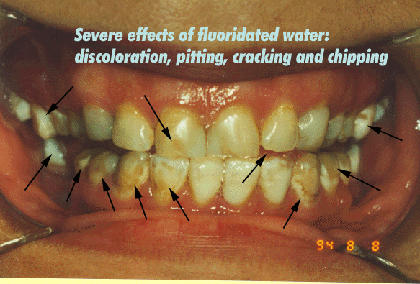 By Dr. Mercola
By Dr. Mercola
In the U.S., water fluoridation has been widespread for the last 70 years. Despite the fact that clear-cut evidence suggests consuming fluoride is dangerous to human health and does little to protect teeth from cavities, it continues to be supported and recommended by nearly all public health and academic institutions.
This includes the American Dental Association (ADA), the American Academy of Pediatrics, U.S. Public Health Service and the World Health Organization (WHO). The U.S. Centers for Disease Control and Prevention (CDC) even went so far as to name water fluoridation as one of the top 10 public health achievements of the 20th century.
Meanwhile, the evidence continues to stack up against this archaic practice, with federal data now showing more than half of U.S. kids may be suffering ill effects from consuming too much fluoride.
Most US Kids Have Fluoride-Damaged Teeth
According to research presented at the April 2017 National Oral Health Conference in Albuquerque, New Mexico, 57 percent of youth between the ages of 6 and 19 years have dental fluorosis, a condition in which your tooth enamel becomes progressively discolored and mottled, according to data from 2011 to 2012.
The statistic represents an increase from 37 percent reported from 1999 to 2004. Further, the author stated, “There was a significant increase in caries experience …” When Fluoride Action Network (FAN) researchers analyzed the same set of data, they found “The 2011 to 2012 NHANES survey found dental fluorosis in 58.3 percent of the surveyed adolescents, including an astonishing 21.2 percent with moderate fluorosis and 2 percent with severe.”
According to FAN, “The data suggests that up to 24 million adolescents now have some form of dental fluorosis, with over 8 million adolescents having moderate fluorosis, and 840,000 having severe fluorosis.”
In stark contrast, when fluoridation was first started in the U.S. in 1945, it was promised that only 10 percent of people would suffer from mild dental fluorosis. Public health officials often brush off fluorosis as a purely aesthetic issue, one they believe is a good trade-off for the supposed benefits of fluoride but, in reality, fluorosis is an outward sign that fluoride is damaging the body.
Research has found impairment in cognitive abilities among children with fluorosis (even mild fluorosis) compared to children with no fluorosis. And some studies have even found that children with higher levels of fluorosis have increased rates of cavities.
